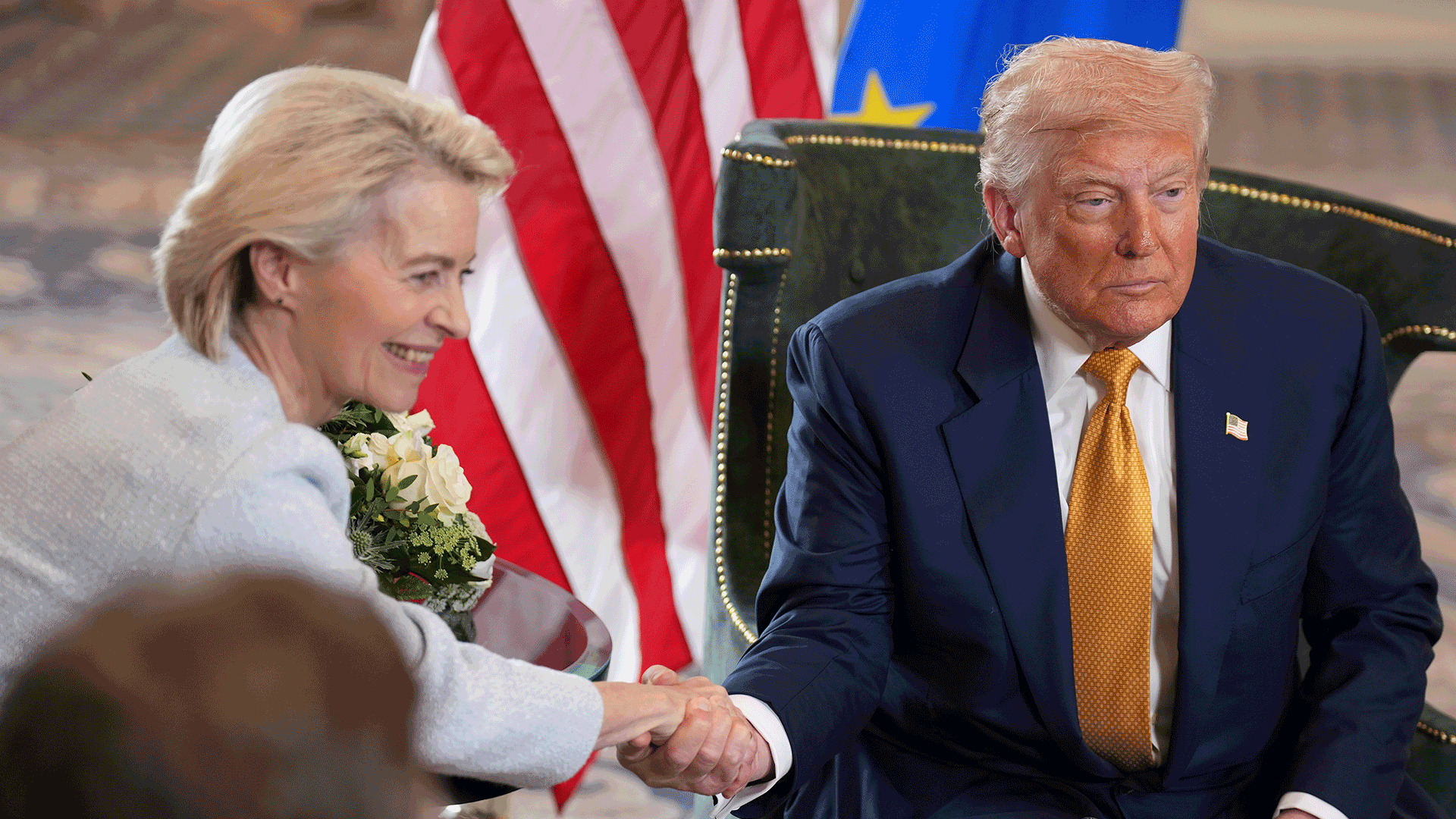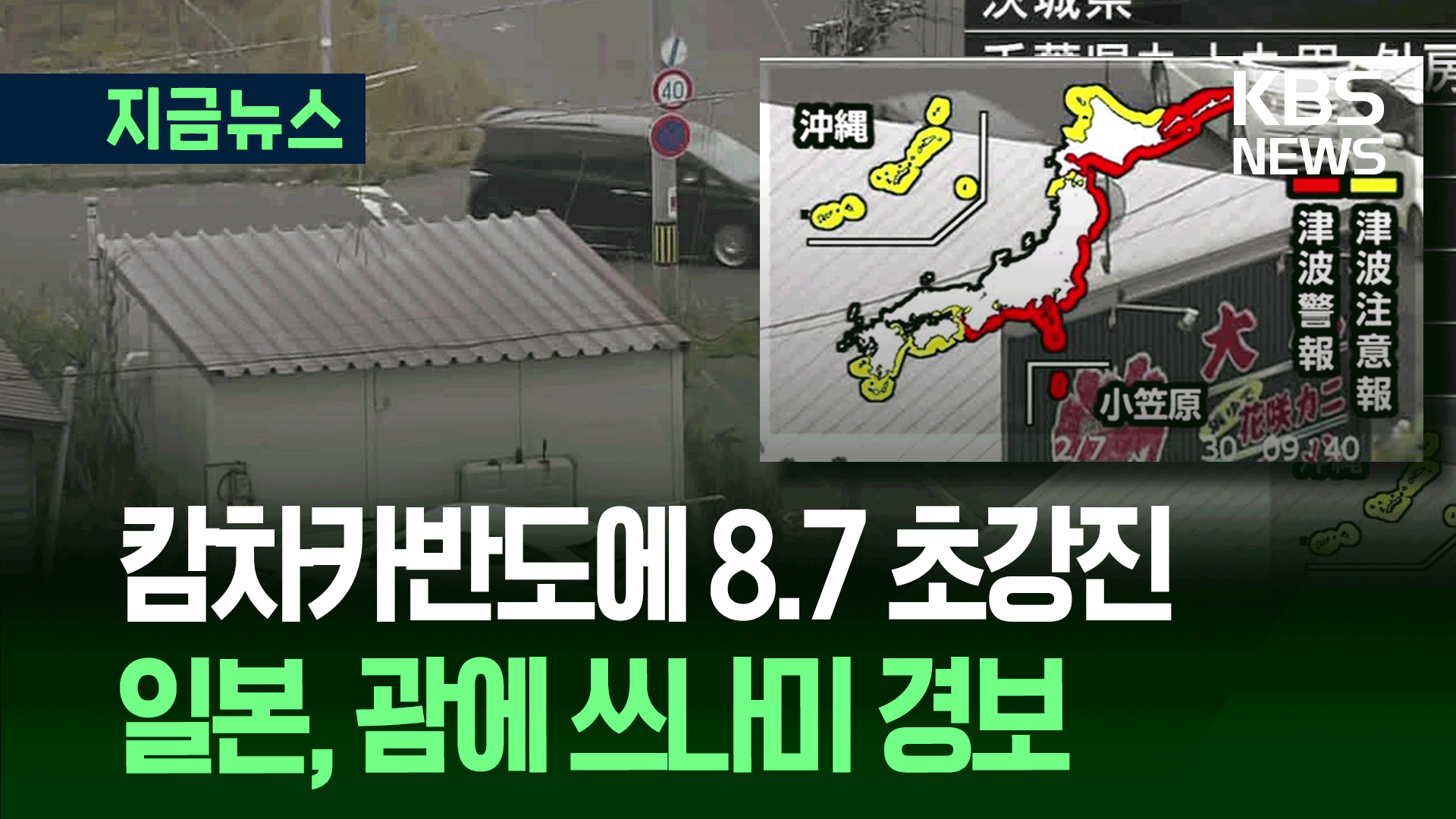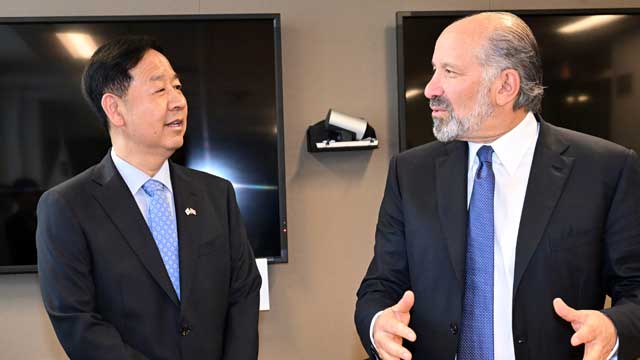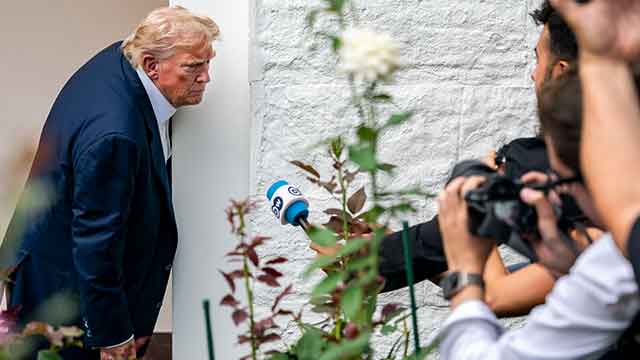[Anchor]
As we are left with the final negotiations, we cannot help but pay attention to the agreements the United States has made with the European Union and Japan.
From this, we can see what the United States wants.
It wants significant investments in the U.S., to buy more American products, and to open up markets widely.
First, looking at the investment amounts, the EU has committed $600 billion, and Japan $550 billion, which is an astronomical figure in our currency, around 700 to 800 trillion won.
In addition, they promised to purchase American energy, military equipment, and aircraft, as well as participate in the Alaska LNG project.
Opening their markets further to U.S. agricultural products and automobiles was just the starting point.
In return for all this, what they received was a so-called “concession”—a tariff rate of 15%.
This 15% now seems to be a new minimum, but criticism is already growing within the EU, asking what was actually gained.
Here’s reporter Ahn Da-young from Paris.
[Report]
President Trump initially imposed a 20% tariff on the European Union.
Frustrated by slow negotiations, he raised it to 50%, then dropped it to 30%, and finally settled at 15%.
Though it appears to be a significant reduction, the current rate was already around 15%, so in reality, not much has changed.
Controversy is also brewing over what the 15% covers.
The EU claims the 15% applies to pharmaceuticals—one of its major exports and among the items the U.S. had signaled for tariffs.
[Ursula von der Leyen/EU Commission President: "15% is a clear ceiling. So no stacking. All inclusive."]
The U.S. perspective is different.
[Donald Trump/U.S. President: "Basically pharmaceuticals won't be part of it because we have to have them built made in the United States."
Before the negotiations, the EU's goal was mutual zero tariffs, investment commitments, and to give a gift package for purchasing American products, but now there are already voices asking, 'What did we gain?'
[Laurent Saint-Martin/French Minister for Foreign Trade: "If you ask whether this agreement was balanced, the answer is 'no.' To be precise, it is not balanced. There needs to be compensation in this area, especially in the services sector."]
In Germany, where cars are a key export item, some welcomed the deal—but even there, it’s seen as merely avoiding the worst, with heavier burdens still looming.
European media are even evaluating this agreement as a face-saving compromise.
Since President Trump has extracted a lot from the EU, a strong negotiating partner, the burden on the remaining negotiating countries, including us, is bound to increase.
This is Ahn Da-young from KBS News in Paris.
As we are left with the final negotiations, we cannot help but pay attention to the agreements the United States has made with the European Union and Japan.
From this, we can see what the United States wants.
It wants significant investments in the U.S., to buy more American products, and to open up markets widely.
First, looking at the investment amounts, the EU has committed $600 billion, and Japan $550 billion, which is an astronomical figure in our currency, around 700 to 800 trillion won.
In addition, they promised to purchase American energy, military equipment, and aircraft, as well as participate in the Alaska LNG project.
Opening their markets further to U.S. agricultural products and automobiles was just the starting point.
In return for all this, what they received was a so-called “concession”—a tariff rate of 15%.
This 15% now seems to be a new minimum, but criticism is already growing within the EU, asking what was actually gained.
Here’s reporter Ahn Da-young from Paris.
[Report]
President Trump initially imposed a 20% tariff on the European Union.
Frustrated by slow negotiations, he raised it to 50%, then dropped it to 30%, and finally settled at 15%.
Though it appears to be a significant reduction, the current rate was already around 15%, so in reality, not much has changed.
Controversy is also brewing over what the 15% covers.
The EU claims the 15% applies to pharmaceuticals—one of its major exports and among the items the U.S. had signaled for tariffs.
[Ursula von der Leyen/EU Commission President: "15% is a clear ceiling. So no stacking. All inclusive."]
The U.S. perspective is different.
[Donald Trump/U.S. President: "Basically pharmaceuticals won't be part of it because we have to have them built made in the United States."
Before the negotiations, the EU's goal was mutual zero tariffs, investment commitments, and to give a gift package for purchasing American products, but now there are already voices asking, 'What did we gain?'
[Laurent Saint-Martin/French Minister for Foreign Trade: "If you ask whether this agreement was balanced, the answer is 'no.' To be precise, it is not balanced. There needs to be compensation in this area, especially in the services sector."]
In Germany, where cars are a key export item, some welcomed the deal—but even there, it’s seen as merely avoiding the worst, with heavier burdens still looming.
European media are even evaluating this agreement as a face-saving compromise.
Since President Trump has extracted a lot from the EU, a strong negotiating partner, the burden on the remaining negotiating countries, including us, is bound to increase.
This is Ahn Da-young from KBS News in Paris.
■ 제보하기
▷ 카카오톡 : 'KBS제보' 검색, 채널 추가
▷ 전화 : 02-781-1234, 4444
▷ 이메일 : kbs1234@kbs.co.kr
▷ 유튜브, 네이버, 카카오에서도 KBS뉴스를 구독해주세요!
- U.S.,EU tariff deal backlash
-
- 입력 2025-07-29 00:04:27

[Anchor]
As we are left with the final negotiations, we cannot help but pay attention to the agreements the United States has made with the European Union and Japan.
From this, we can see what the United States wants.
It wants significant investments in the U.S., to buy more American products, and to open up markets widely.
First, looking at the investment amounts, the EU has committed $600 billion, and Japan $550 billion, which is an astronomical figure in our currency, around 700 to 800 trillion won.
In addition, they promised to purchase American energy, military equipment, and aircraft, as well as participate in the Alaska LNG project.
Opening their markets further to U.S. agricultural products and automobiles was just the starting point.
In return for all this, what they received was a so-called “concession”—a tariff rate of 15%.
This 15% now seems to be a new minimum, but criticism is already growing within the EU, asking what was actually gained.
Here’s reporter Ahn Da-young from Paris.
[Report]
President Trump initially imposed a 20% tariff on the European Union.
Frustrated by slow negotiations, he raised it to 50%, then dropped it to 30%, and finally settled at 15%.
Though it appears to be a significant reduction, the current rate was already around 15%, so in reality, not much has changed.
Controversy is also brewing over what the 15% covers.
The EU claims the 15% applies to pharmaceuticals—one of its major exports and among the items the U.S. had signaled for tariffs.
[Ursula von der Leyen/EU Commission President: "15% is a clear ceiling. So no stacking. All inclusive."]
The U.S. perspective is different.
[Donald Trump/U.S. President: "Basically pharmaceuticals won't be part of it because we have to have them built made in the United States."
Before the negotiations, the EU's goal was mutual zero tariffs, investment commitments, and to give a gift package for purchasing American products, but now there are already voices asking, 'What did we gain?'
[Laurent Saint-Martin/French Minister for Foreign Trade: "If you ask whether this agreement was balanced, the answer is 'no.' To be precise, it is not balanced. There needs to be compensation in this area, especially in the services sector."]
In Germany, where cars are a key export item, some welcomed the deal—but even there, it’s seen as merely avoiding the worst, with heavier burdens still looming.
European media are even evaluating this agreement as a face-saving compromise.
Since President Trump has extracted a lot from the EU, a strong negotiating partner, the burden on the remaining negotiating countries, including us, is bound to increase.
This is Ahn Da-young from KBS News in Paris.
As we are left with the final negotiations, we cannot help but pay attention to the agreements the United States has made with the European Union and Japan.
From this, we can see what the United States wants.
It wants significant investments in the U.S., to buy more American products, and to open up markets widely.
First, looking at the investment amounts, the EU has committed $600 billion, and Japan $550 billion, which is an astronomical figure in our currency, around 700 to 800 trillion won.
In addition, they promised to purchase American energy, military equipment, and aircraft, as well as participate in the Alaska LNG project.
Opening their markets further to U.S. agricultural products and automobiles was just the starting point.
In return for all this, what they received was a so-called “concession”—a tariff rate of 15%.
This 15% now seems to be a new minimum, but criticism is already growing within the EU, asking what was actually gained.
Here’s reporter Ahn Da-young from Paris.
[Report]
President Trump initially imposed a 20% tariff on the European Union.
Frustrated by slow negotiations, he raised it to 50%, then dropped it to 30%, and finally settled at 15%.
Though it appears to be a significant reduction, the current rate was already around 15%, so in reality, not much has changed.
Controversy is also brewing over what the 15% covers.
The EU claims the 15% applies to pharmaceuticals—one of its major exports and among the items the U.S. had signaled for tariffs.
[Ursula von der Leyen/EU Commission President: "15% is a clear ceiling. So no stacking. All inclusive."]
The U.S. perspective is different.
[Donald Trump/U.S. President: "Basically pharmaceuticals won't be part of it because we have to have them built made in the United States."
Before the negotiations, the EU's goal was mutual zero tariffs, investment commitments, and to give a gift package for purchasing American products, but now there are already voices asking, 'What did we gain?'
[Laurent Saint-Martin/French Minister for Foreign Trade: "If you ask whether this agreement was balanced, the answer is 'no.' To be precise, it is not balanced. There needs to be compensation in this area, especially in the services sector."]
In Germany, where cars are a key export item, some welcomed the deal—but even there, it’s seen as merely avoiding the worst, with heavier burdens still looming.
European media are even evaluating this agreement as a face-saving compromise.
Since President Trump has extracted a lot from the EU, a strong negotiating partner, the burden on the remaining negotiating countries, including us, is bound to increase.
This is Ahn Da-young from KBS News in Paris.
-
-

안다영 기자 browneyes@kbs.co.kr
안다영 기자의 기사 모음
-
이 기사가 좋으셨다면
-
좋아요
0
-
응원해요
0
-
후속 원해요
0













![[영상] ‘아들 총기 살해범’ 구속 송치…사과 없이 ‘침묵’](/data/fckeditor/vod/2025/07/30/320341753872306049.png)

이 기사에 대한 의견을 남겨주세요.